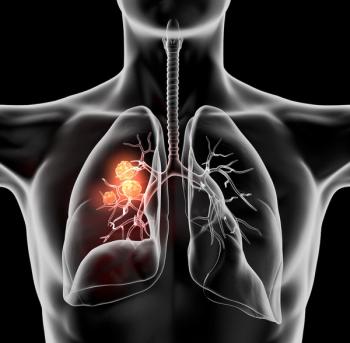
First-Line Nivolumab Plus Ipilimumab Improves OS Versus Chemo in Patients with Metastatic Uveal Melanoma
First-line treatment with nivolumab plus ipilimumab showed a moderate improvement in overall survival and a manageable safety profile in patients with metastatic uveal melanoma.
A phase 2 study published in the Journal of Clinical Oncology found that in the first-line setting for patients with metastatic uveal melanoma, nivolumab (Opdivo) plus ipilimumab (Yervoy) demonstrated a modest improvement in overall survival compared with historical benchmarks of chemotherapy.
In addition, the toxicity profile of the treatment combination was found to be manageable and did not differ from that in observed in patients with cutaneous melanoma, for which treatment with nivolumab plus ipilimumab is already approved.
“These results provide a strong rationale for further research on immunotherapy treatment combinations in [uveal melanoma],” wrote the study authors, who were led by José María Piulats, MD, PhD.
In this multicenter, open-label, single-arm phase 2 trial (NCT02626962) led by the Spanish Multidisciplinary Melanoma Group (GEM), treatment-naïve patients who were at least 18 years of age with histologically confirmed metastatic uveal melanoma, an ECOG performance status of 0 or 1, and confirmed progressive metastatic disease (M1) were enrolled. Participants were administered nivolumab at a dose of 1 mg/kg and ipilimumab at a dose of 3 mg/kg, both given once every 3 weeks during 4 inductions, followed by nivolumab at a dose of 3 mg/kg once every 2 weeks until disease progression (PD), toxicity, or withdrawal.
The study’s primary end point was the 12-month OS rate. OS, progression-free survival (PFS), and overall response rate were evaluated every 6 weeks using RECIST 1.1 criteria; safety was also assessed.
Overall, 52 patients were enrolled, including 78.8% with disease metastatic to the liver (M1), 56% with extra-liver disease (M1), and 32% with elevated lactate dehydrogenase. In total, 6 patients (11.5%; 95% CI, 2.9%-20.2%) had an objective response, including 1 complete response and 5 partial responses. Further, responses typically appeared within the first 9 months of treatment initiation (median, 3.7; range, 2.91-10.0) and were maintained for a median of 15.6 months (95% CI, 1.6-33.8).
Ultimately, stable disease was revealed to be the most common outcome, occurring in 51.9% of patients (95% CI, 38.3%-65.5%), and was maintained for a median of 3.8 months (95% CI, 0.1-21.5). Further, the disease control rate was 63.5% (95% CI, 50.4%-76.5%) and the majority of patients with PD (80.8%; 95% CI, 70.1%-91.5%) demonstrated a radiologically significant growth of their target lesions.
The median OS was revealed to be 12.7 months (95% CI, 7.1-18.3), with 12- and 24-month OS rates of 51.9% (95% CI, 38.3%-65.5%) and 26.4% (95% CI, 14.2%-38.6%), respectively. In patients with exclusive liver metastasis, OS was shorter than that seen in patients with metastasis in other locations beyond the liver (9.2 months vs 23.5 months, respectively) as well as in those with both liver and other metastasis (15.5 months), though this difference was not deemed to be significant (P = .146).
Moreover, the median PFS was 3.0 months (95% CI, 2.0-4.1). Notably, PFS was found to be influenced by higher lactate dehydrogenase (LDH) values.
“Our results should be interpreted with caution when compared to previous trials, which might have lower-/higher-risk patients,” the authors noted.
Regarding safety, all patients developed adverse events (AEs). Treatment-related AEs (TRAEs) were reported in 49 of the 52 patients, with skin-related events being the most frequent (61.5%), followed by fatigue (57.7%) and liver-related events (36.5%). Treatment-related diarrhea was also observed in 28.8% of patients.
Grade 3 or higher TRAEs were reported in 30 patients (57.7%). Of 56 serious AEs (SAEs), 30 were treatment-related and 23 eventually resolved or improved. The most frequent treatment-related SAEs (TRSAEs) included fever (4 events), liver-related events (3 events), and diarrhea (3 events). There was a total of 2 treatment-related deaths, including 1 patient with thyroiditis and 1 with Guillain-Barré syndrome.
According to the investigators, patients with extrahepatic disease, regardless of liver involvement, were shown to benefit more from combination treatment with nivolumab and ipilimumab. However, this observation still needs to be validated in future studies.
Reference:
Piulats JM, Espinosa E, Merino LC, et al. Nivolumab plus ipilimumab for treatment-naïve metastatic uveal melanoma: an open-label, multicenter, phase II trial by the Spanish Multidisciplinary Melanoma Group (GEM-1402). J Clin Oncol. Published online January 8, 2021. doi: 10.1200/JCO.20.00550
Newsletter
Stay up to date on recent advances in the multidisciplinary approach to cancer.



















































































